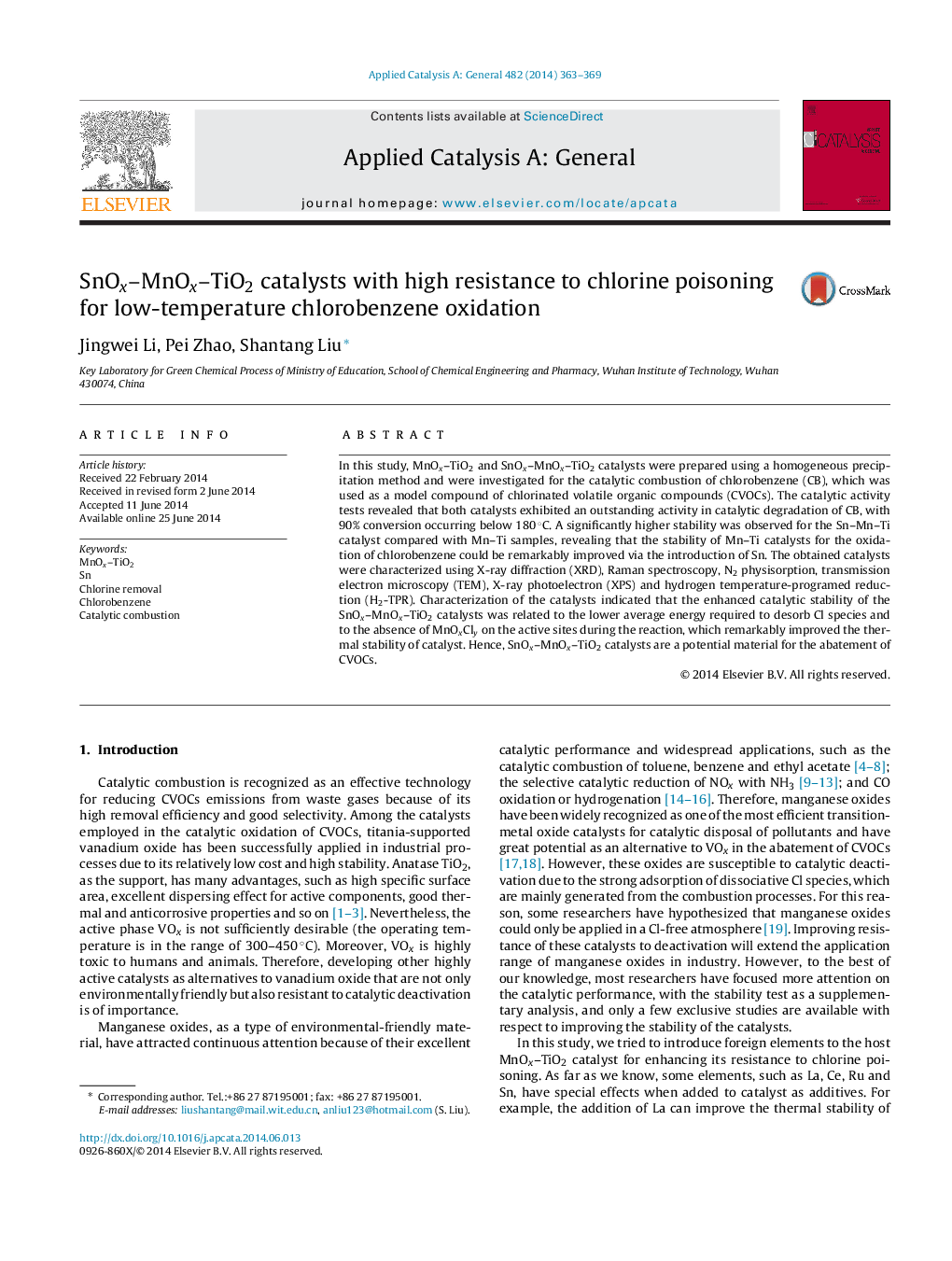| Article ID | Journal | Published Year | Pages | File Type |
|---|---|---|---|---|
| 39620 | Applied Catalysis A: General | 2014 | 7 Pages |
•The SnOx–MnOx–TiO2 catalyst is very active for chlorobenzene oxidation.•The SnOx–MnOx–TiO2 catalyst shows superior stability compared with MnOx–TiO2.•Sn is found to have a good anti-Cl poison ability for the catalyst.
In this study, MnOx–TiO2 and SnOx–MnOx–TiO2 catalysts were prepared using a homogeneous precipitation method and were investigated for the catalytic combustion of chlorobenzene (CB), which was used as a model compound of chlorinated volatile organic compounds (CVOCs). The catalytic activity tests revealed that both catalysts exhibited an outstanding activity in catalytic degradation of CB, with 90% conversion occurring below 180 °C. A significantly higher stability was observed for the Sn–Mn–Ti catalyst compared with Mn–Ti samples, revealing that the stability of Mn–Ti catalysts for the oxidation of chlorobenzene could be remarkably improved via the introduction of Sn. The obtained catalysts were characterized using X-ray diffraction (XRD), Raman spectroscopy, N2 physisorption, transmission electron microscopy (TEM), X-ray photoelectron (XPS) and hydrogen temperature-programed reduction (H2-TPR). Characterization of the catalysts indicated that the enhanced catalytic stability of the SnOx–MnOx–TiO2 catalysts was related to the lower average energy required to desorb Cl species and to the absence of MnOxCly on the active sites during the reaction, which remarkably improved the thermal stability of catalyst. Hence, SnOx–MnOx–TiO2 catalysts are a potential material for the abatement of CVOCs.
Graphical abstractFigure optionsDownload full-size imageDownload high-quality image (111 K)Download as PowerPoint slide
